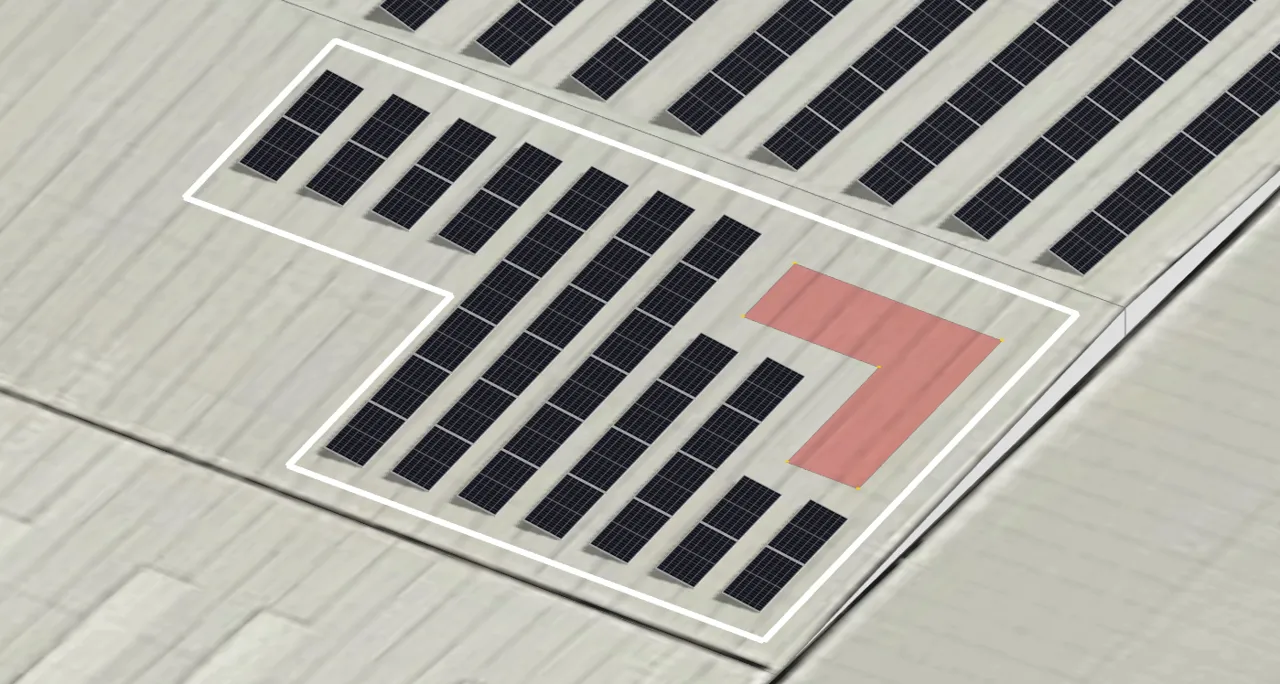Zones
The zones, as opposed to roofs and obstacles, do not have volumetric properties. This means they do not have height, tilt nor orientation. Instead, they inherit these properties from whatever they have bellow them.
They can be placed on top of roofs as well as directly on the ground.
Ground mount
Placing zones on the ground allows you to design ground mounted systems.
For example, using a zone with:
- Vertical modules
- Tilt set to 20°
- Group Y set to 2
- Group X set to 21
- Separation Y to 3.65 meters
- Separation X to 1 meter
You can quickly place thousands of modules on the ground.
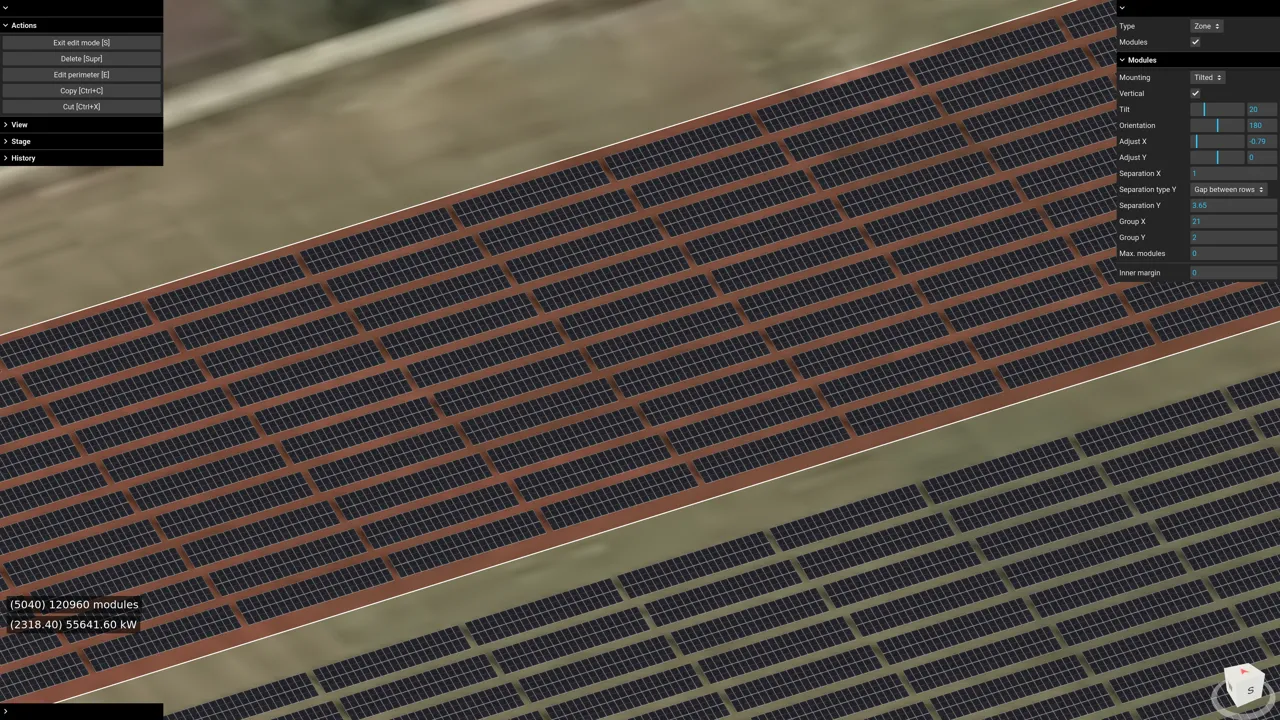
Exclusion zones
When drawing a zone, you can uncheck the "Modules" option to create exclusion zones. These define specific areas where you do not want to place any modules.
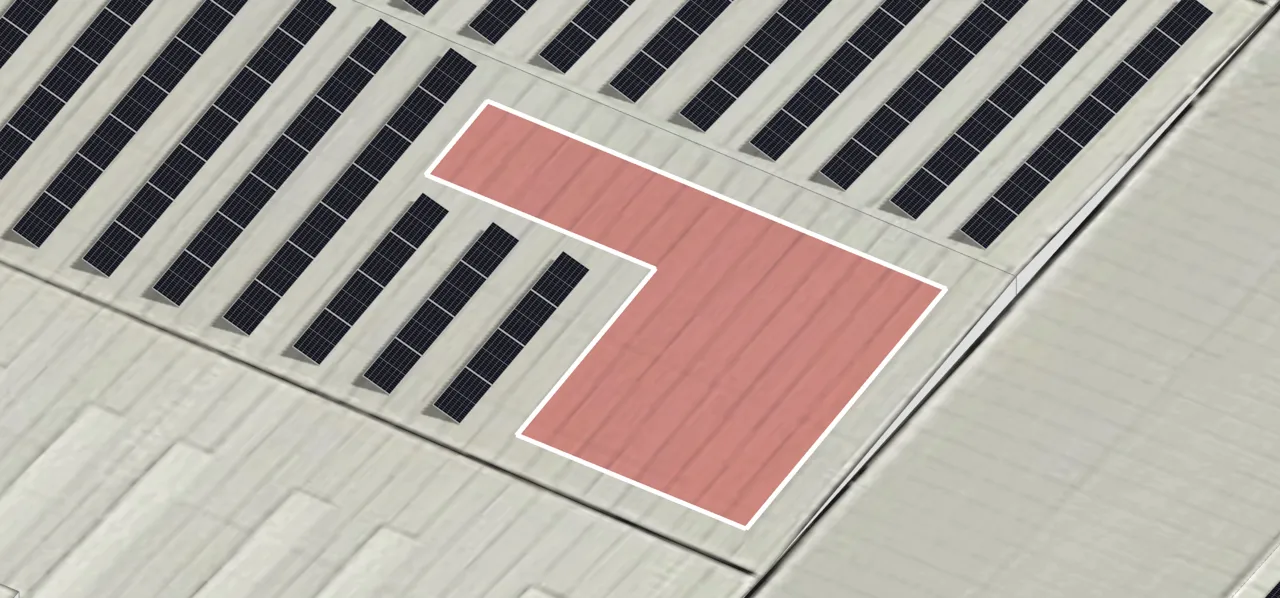
Zones can have any shape and size, so you can create small exclusion zones to remove individual modules:
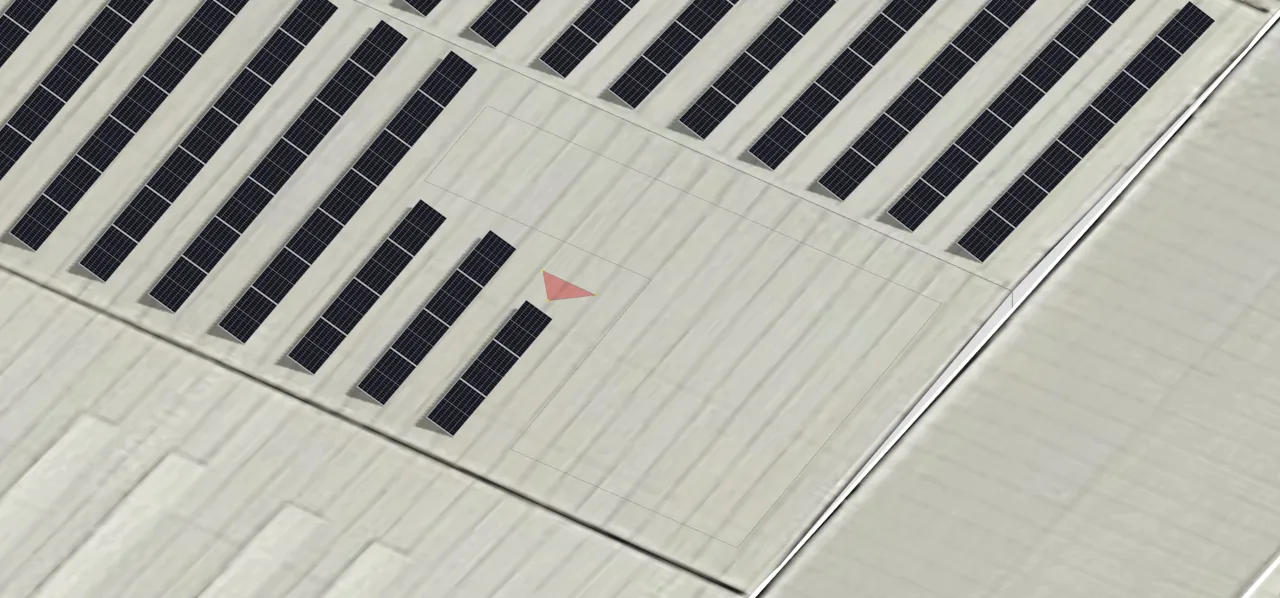
Inclusion zones
When drawing a zone, you can check the "Modules" option to create inclusion zones. These define specific areas where you want to place modules.
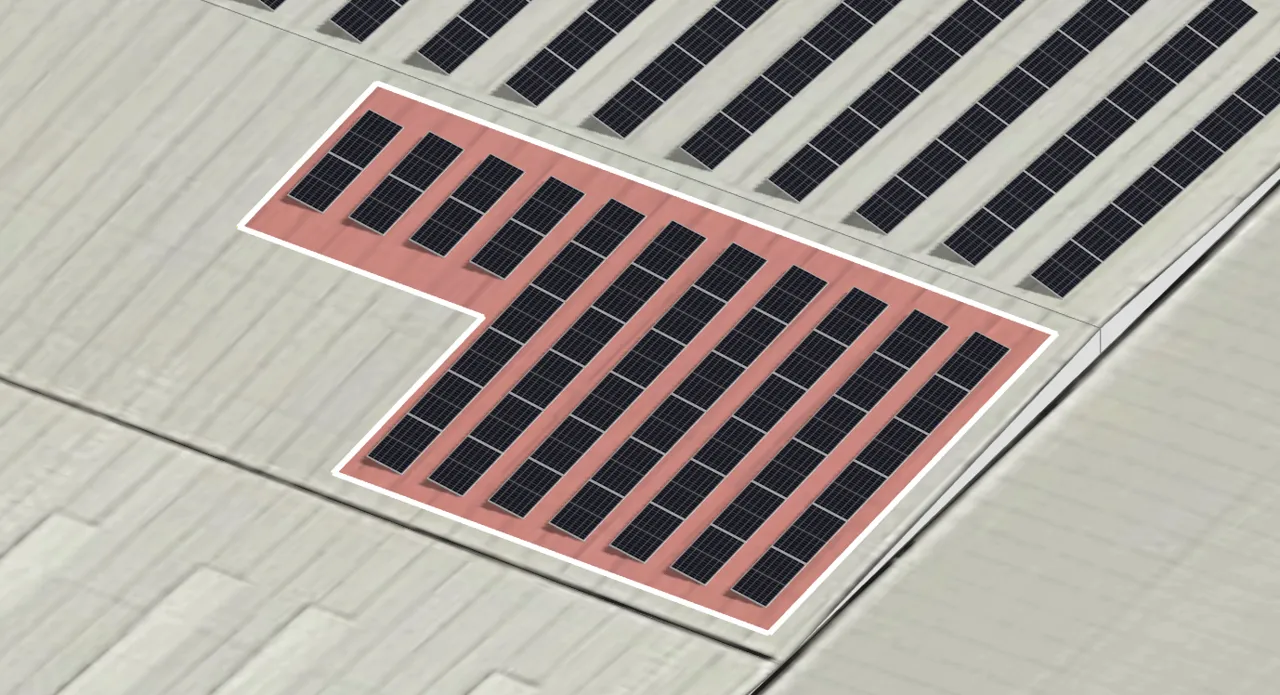
Each zone has its own configuration, so you can use multiple zones to define areas with different configurations.
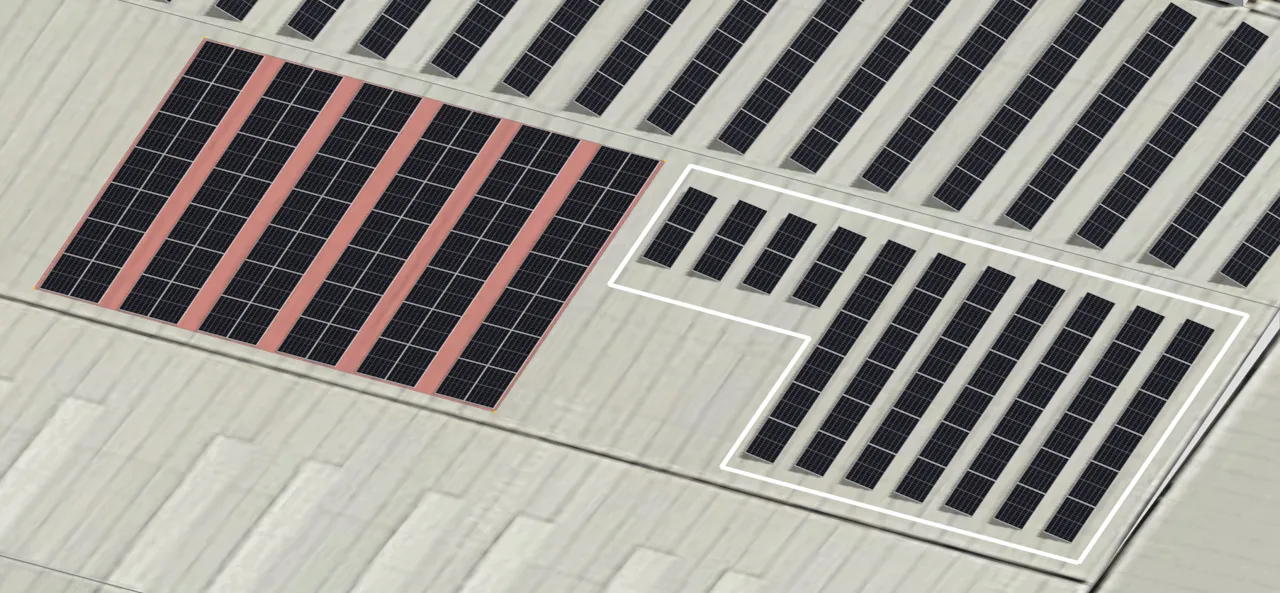
TIP
For small-sized inclusion zones, you will probably find the modules tool easier to use.
Nesting
You can also nest zones if needed. For example, you can draw an inclusion zone on a roof, and then draw a smaller exclusion zone inside it to remove some modules.
